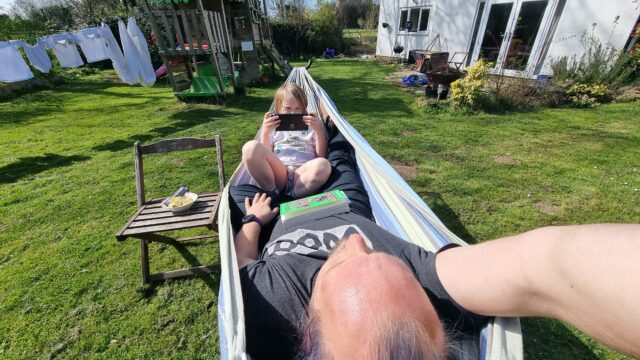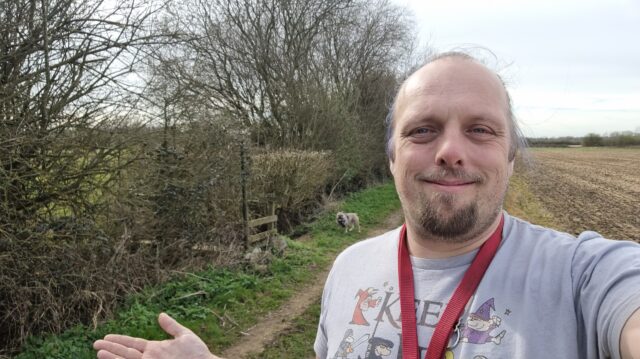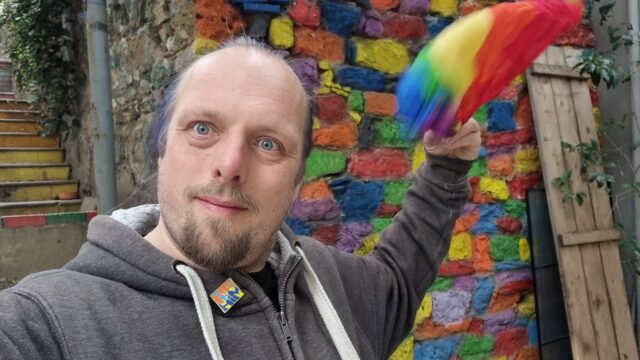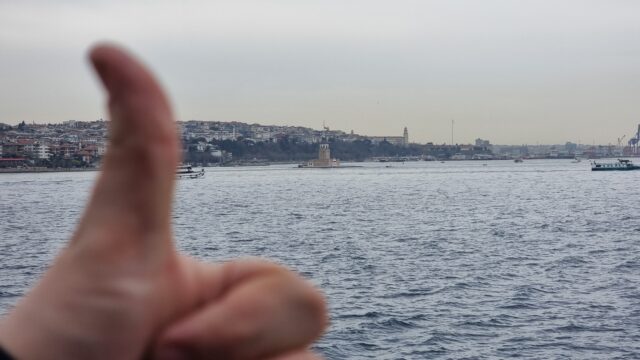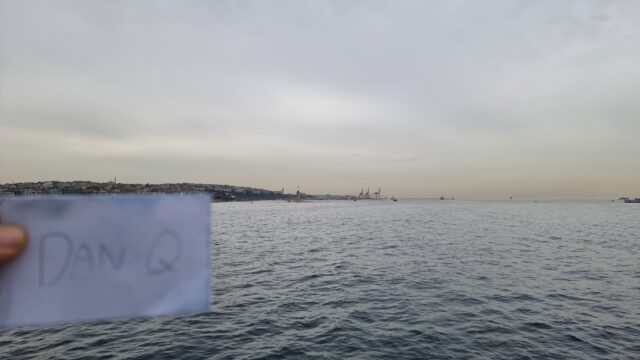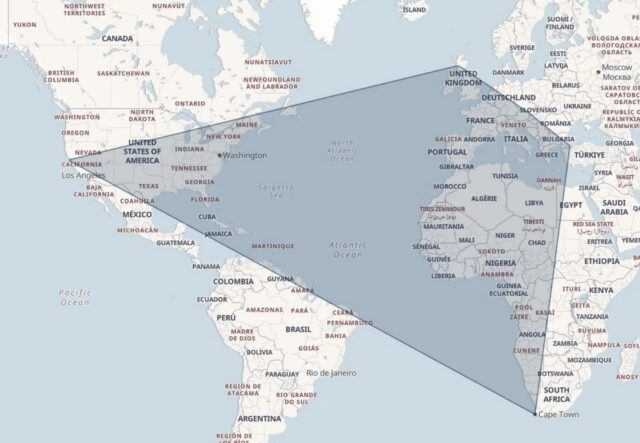Sometimes the kids need to leave your pub dinner before you finish your drink, and you need to take a “to-go” pint.
Blog
Note #26217
Istanbul decompression
It wasn’t until I made time for myself to get out into the countryside near my home and take the dog for a walk that I realised how much stress I’d been putting myself under during my team meetup, this week.
Istanbul was enjoyable and fascinating, and I love my team, but I always forget until after the fact how much a few days worth of city crowds can make me feel anxious and trapped.
It’s good to get a mile or two from the nearest other human and decompress!
Delivery Songs
Podcast Version
This post is also available as a podcast. Listen here, download for later, or subscribe wherever you consume podcasts.
Here in the UK, ice cream vans will usually play a tune to let you know they’re set up and selling1. So when you hear Greensleeves (or, occasionally, Waltzing Matilda), you know it’s time to go and order yourself a ninety-nine.
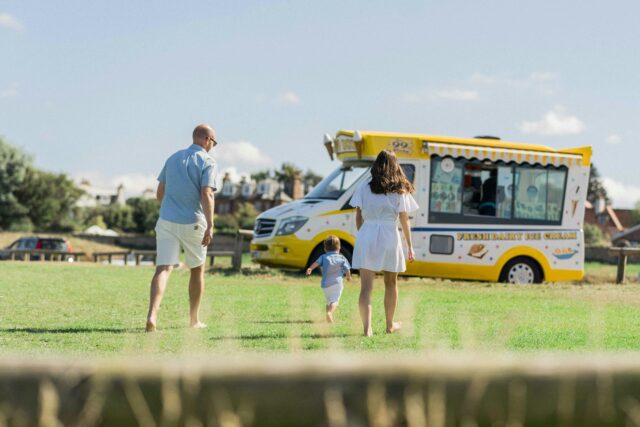
Imagine my delight, then, when I discover this week that ice cream vans aren’t the only services to play such jaunty tunes! I was sat with work colleagues outside İlter’s Bistro on Meşrutiyet Cd. in Istanbul, enjoying a beer, when a van carrying water pulled up and… played a little song!
And then, a few minutes later – as if part of the show for a tourist like me – a flatbed truck filled with portable propane tanks pulled up. Y’know, the kind you might use to heat a static caravan. Or perhaps a gas barbeque if you only wanted to have to buy a refill once every five years. And you know what: it played a happy little jingle, too. Such joy!
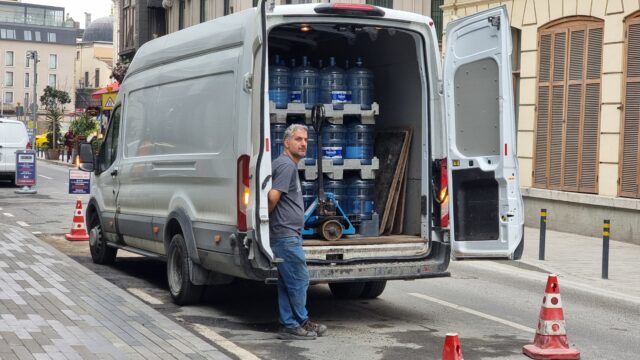
My buddy Cem, who’s reasonably local to the area, told me that this was pretty common practice. The propane man, the water man, etc. would all play a song when they arrived in your neighbourhood so that you’d be reminded that, if you hadn’t already put your empties outside for replacement, now was the time!
And then Raja, another member of my team, observed that in his native India, vegetable delivery trucks also play a song so you know they’re arriving. Apparently the tune they play is as well-standardised as British ice cream vans are. All of the deliveries he’s aware of across his state of Chennai play the same piece of music, so that you know it’s them.
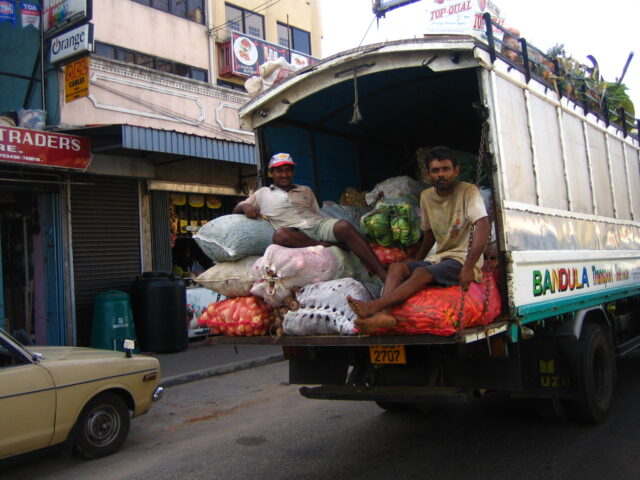
It got me thinking: what other delivery services might benefit from a recognisable tune?
- Bin men: I’ve failed to put the bins out in time frequently enough, over the course of my life, that a little jingle to remind me to do so would be welcome4! (My bin men often don’t come until after I’m awake anyway, so as long as they don’t turn the music on until after say 7am they’re unlikely to be a huge inconvenience to anybody, right?) If nothing else, it’d cue me in to the fact that they were passing so I’d remember to bring the bins back in again afterwards.
- Fish & chip van: I’ve never made use of the mobile fish & chip van that tours my village once a week, but I might be more likely to if it announced its arrival with a recognisable tune.
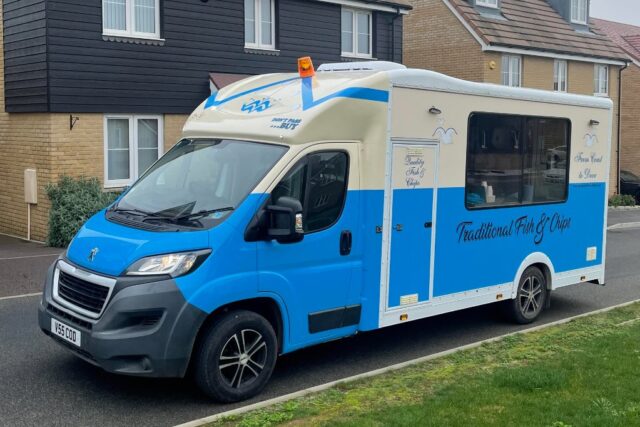
- Milkman: I’ve a bit of a gripe with our milkman. Despite promising to deliver before 07:00 each morning, they routinely turn up much later. It’s particularly troublesome when they come at about 08:40 while I’m on the school run, which breaks my routine sufficiently that it often results in the milk sitting unseen on the porch until I think to check much later in the day. Like the bin men, it’d be a convenience if, on running late, they at least made their presence in my village more-obvious with a happy little ditty!
- Emergency services: Sirens are boring. How about if blue light services each had their own song. Perhaps something thematic? Instead of going nee-naw-nee-naw, you’d hear, say, de-do-do-do-de-dah-dah-dah and instantly know that you were hearing The Police.
- Evri: Perhaps there’s an appropriate piece of music that says “the courier didn’t bother to ring your doorbell, so now your parcel’s hidden in your recycling box”? Just a thought.
Anyway: the bottom line is that I think there’s an untapped market for jolly little jingles for all kinds of delivery services, and Turkey and India are clearly both way ahead of the UK. Let’s fix that!
Footnotes
1 It’s not unheard of for cruel clever parents to try to teach their young
children that the ice cream van plays music only to let you know it’s sold out of ice cream. A devious plan, although one I wasn’t smart (or evil?) enough to try for
myself.
2 The official line from the government is that the piped water is safe to drink, but every single Turkish person I spoke to on the subject disagreed and said that I shouldn’t listen to… well, most of what the government says. Having now witnessed first-hand the disparity between the government’s line on the unrest following the arrest of the opposition’s presidential candidate and what’s actually happening on the ground, I’m even more inclined to listen to the people.
3 My gas delivery man should also have his own song, of course. Perhaps an instrumental cover of Burn Baby Burn?
4 Perhaps bin men could play Garbage Truck by Sex Bob-Omb/Beck? That seems kinda fitting. Although definitely not what you want to be woken up with if they turn the speakers on too early…
Dan Q found GC7B9C6 Heykel&Boğaz/Sculpture & Bosphorus- Virtual Reward
This checkin to GC7B9C6 Heykel&Boğaz/Sculpture & Bosphorus- Virtual Reward reflects a geocaching.com log entry. See more of Dan's cache logs.
As others have observed, this is a bit challenging right now owing to the hoardings that have been erected in the way. But like others, I found a gap in the fence through which I was able to photograph the sculpture (while holding up a piece of paper with the geocaching logo and my username, to prevent reuse!). TFTC!

Dan Q found GC6JQAX Rainbow Stairs
This checkin to GC6JQAX Rainbow Stairs reflects a geocaching.com log entry. See more of Dan's cache logs.
I’d hoped not to need the spoiler image but after an extended hunt I gave up and used it. Soon the cache was in hand. Found a space to squeeze my name into the log, and returned to its sneaky hiding spot. Also ran all the way up and down to count the steps and update OpenStreetMap, which didn’t have an accurate count.
Whether or not this piece of art is or was an act of political defiance, it might need to be one once again. Brought my own rainbow so I could be part of it, too. 🌈✊
TFTC. Greetings from Oxfordshire, UK.
Reply to: Is Not Answering the Thing Now?
This is a reply to a post published elsewhere. Its content might be duplicated as a traditional comment at the original source.
I try to reply to every personal (i.e. from a human, not an automated service, not not including spam) email, unless it very-clearly doesn’t need one: e.g. it’s the end of a conversation or was the response to my query. I suppose that I’m trying to say is that an initial contact with me – a new conversation – should always get a response, because that reassures you that it arrived.
But I see the trend, and I’ve been part of it. Thanks to my many points of presence on the Web, I receive messages on a great number of subjects. Sometimes, if – say – one arrives while I’m travelling, and then when I get around to properly reading it I think it deserves a well-thought out and researched and reasoned answer… I’ll save it for later. And that’s when the trouble starts.
Drifting down my Inbox, it falls out of sight and mind. Whenever I see it, I’m back to square one: having not yet made the time and space to give it the consideration it deserves. The longer it remains there, the more the pressure builds: if it took me three weeks to reply to this email, my reply has to be really good, right? Just firing off a “thanks for your email, sorry I haven’t given it a proper reply yet” now would just be awkward. So it sits longer and stagnates. Eventually, crushed under the weight of the emails above it and of my growing awkwardness with the situation, it gets deleted.
Usually that takes about six months, but in one particularly terrible case – a friend shared with me a draft of some fiction they’d been writing – it took eight years. Eight years of a message sitting in my Inbox, begging me to write a proper response, and me not doing so because any reply I could by-that-point produce nothing that would possibility justify the time it took to respond.
(At some points in my past I’ve had the same problem with blogging: if I take a month without writing a post, it feels like the pressure to produce a real banger is so high that it makes me stagnate. That’s part of the reason that nowadays I semi-automate the inclusion of so much of my life into my blog: ad-hoc notes, checkins to geocaches, etc. Blogging more helps fight the pressure.)
I’d like to think I do better nowadays. I don’t think I’ve got any unanswered personal email in my Inbox (though now I mention it, I think there’s a mailing list I feel like I’m overdue to chip in on).
But on behalf of the people who don’t reliably reply because it feels like too much pressure if you missed the opportunity to do so immediately, I have some empathy. I’ve been there, and the struggle is real. It’s possible, like me, to come out the other side of a mindset of letting email stagnate because you can’t find the words to justify the time it took to respond.
(Anybody who’s got different reasons to mine for failing to respond to personal emails can speak for themselves. Though – possibly – not by email.)
Dan Q found GC7B79C Kız Kulesi/Maiden’s Tower- Virtual Reward
This checkin to GC7B79C Kız Kulesi/Maiden's Tower- Virtual Reward reflects a geocaching.com log entry. See more of Dan's cache logs.
Went over on the ferry. Using my phone as my GPSr and also my camera, so snapped a thumbs up, and my name, and my face, all with the tower visible. Looks like it’s going to rain so I’d better find some shelter! TFTC!
Dan Q found GCAJHQ1 The Fountain of Sultan Ahmed III
This checkin to GCAJHQ1 The Fountain of Sultan Ahmed III reflects a geocaching.com log entry. See more of Dan's cache logs.
Two virtual caches in such close proximity! And what a beautiful fountain. As requested, photo shows the fountain and my username, but also me! Greetings from Oxfordshire, UK, and TFTC!
Dan Q found GCAJG5P The Two Mosques Virtual Reward 4.0
This checkin to GCAJG5P The Two Mosques Virtual Reward 4.0 reflects a geocaching.com log entry. See more of Dan's cache logs.
Here with worth colleagues on our “day off” from meetings and code hackathons, we’re planning to visit the mosque I chose to photograph behind me. TFTC, and greetings from Oxfordshire, UK.
Dan Q found GC6VTEG Galata Bridge #3
This checkin to GC6VTEG Galata Bridge #3 reflects a geocaching.com log entry. See more of Dan's cache logs.
After lunch with my work team in a delightful restaurant overlooking the bridge (which I’m just-about pointing at in the attached photo) I decided to take a diversion on the route back to our coworking space to come and find this geocache, my most-Easterly yet.
The coordinates put me exactly at a likely spot, but it actually took until I’d searched three different candidate hosts before the cache container was in my hand. Signed log and (stealthily) returned to hiding place. TFTC!
Geocaching Convex Hull now includes Turkey
Thanks to finding a couple of geocaches here in Istanbul, my geocaching “2D convex hull” (the smallest possible convex polygon that covers an area), which I wrote some code to draw last year, just expanded a little further to the East. 🎉
I’ve got a lot of the world left still to encircle, but I’m slowly extending my reach…
(previous map, for comparison: https://danq.me/_q23u/2024/04/dans-geoing-hull-2024-04-03.webp)
Dan Q found GC892N8 Galata Tower
This checkin to GC892N8 Galata Tower reflects a geocaching.com log entry. See more of Dan's cache logs.
My second visit of the day to the tower, has I didn’t have a working pen with me on the first. Decided to go all-in on using my working pen by drawing myself holding a sign, showing myself holding a sign, showing myself holding a sign… you get the idea.
TFTC, and greetings from Oxfordshire, UK.
Dan Q found GC67ZH1 Karakoy Tunel
This checkin to GC67ZH1 Karakoy Tunel reflects a geocaching.com log entry. See more of Dan's cache logs.
QEF after a meeting in a nearby coworking space with some work colleagues from around the globe. A little stealth was required: given what’s going on in the city right now, I definitely didn’t want to look suspicious to one of the nearby cops! Soon retrieved, signed, and returned the cache. TFTC, and greetings from Oxfordshire, UK!
Team Desire in Istanbul
With visa complications and travel challenges, this is the very first time that my team – whom I’ve been working with for the last year – have ever all been in the same country, all at the same time.
You can do a lot in a distributed work environment. But sometimes you just have to come together… in celebration of your achievements, in anticipation of what you’ll do next, and in aid of doing those kinds of work that really benefit from a close, communal, same-timezone environment.

